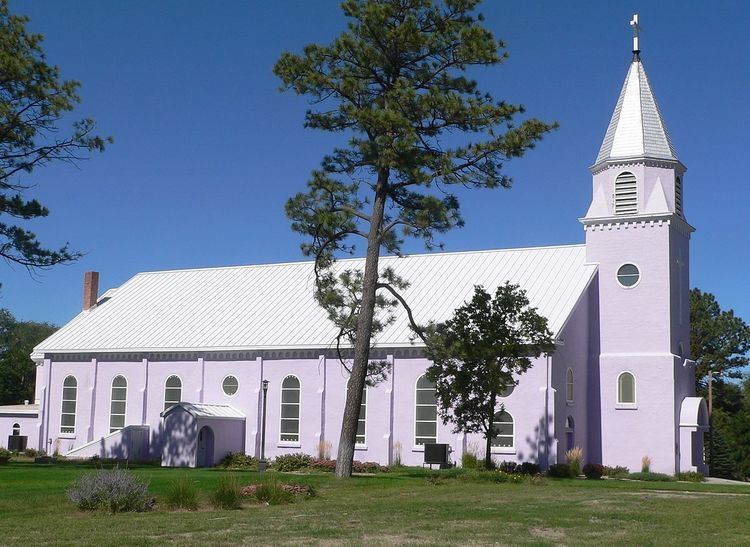Website SF Mission Phone +1 605-747-2361 Added to NRHP 20 June 1975 | Area 14 ha Founded 1886 | |
 | ||
Established 1886; 131 years ago (1886) Board ofDirectors PresidentFr. John Hatcher, S.J. Address 350 Oak St, St Francis, SD 57572, USA Affiliations Society of Jesus, Catholic Church Profiles | ||
The holy door at st francis mission
St. Francis Mission is a Roman Catholic mission complex on the Rosebud Indian Reservation in St. Francis, South Dakota, among the Lakota-Sioux Native Americans. The mission was founded in 1886 by the Jesuits who were welcomed by Bishop Martin Marty, and it soon grew to a large collection of buildings. Most of these were destroyed by a fire in 1916, but many were soon rebuilt. The mission complex includes 26 buildings, the most prominent of which are St. Charles Borromeo Church and the 1916 Drexall Hall, the latter a multifunction structure providing classrooms, meeting spaces, and residential spaces. The complex also includes one of two known copies of a statue of Kateri Tekakwitha by Joseph-Émile Brunet. The complex was listed on the National Register of Historic Places in 1975.
Contents
History
The Jesuit presence in this area goes back to the 1840s when Fr. Peter DeSmet, S.J., was welcomed by the plains Indians and had contacts with the Lakota. Based on his reputation as a man who could be trusted, and on the Jesuit reputation as educators, in 1877 Chief Sinte Gleska (Spotted Tail), leader of the Sicangu Lakota, and Chief Red Cloud, leader of the Oglala, obtained permission from President Rutherford B. Hayes "to get Catholic priests. Those who wear black dresses. These men will teach us how to read and write English.” This led to the arrival of a Jesuit Father and brother soon after 1881 and, with financial help from St. Katherine Drexel, the completion of a large building in 1886. In 1888 Franciscan Sisters Kostka, Rosalia, and Alcantara came to teach in the school which they named after St. Francis. Jesuit Fr. Florentine Digmann who had come with the sisters went on to establish 37 mission stations on the Rosebud Reservation. Since 1974 the school, locally called Sapa Un Ti (“where the Black Robes live”), has been run by the tribe, independently from the Jesuit mission. The many chapels have been replaced by six parishes on the reservation.
Current programs
In 2016 three Jesuit priests along with Jesuit Volunteer Corps members were serving the Mission, with assistance from Lakota – a deacon, several commissioned lay ministers, and numerous volunteers – working among the 20,000 who remain on the reservation. The Mission supports high school equivalency (GED) and adult education, Icimani Ya Waste Recovery Center, the White River Recovery Center, the CYO Religious Education Center in Rosebud, and the Wiwila Wakpala after-school center in Spring Creek, along with the following works at the Center:
